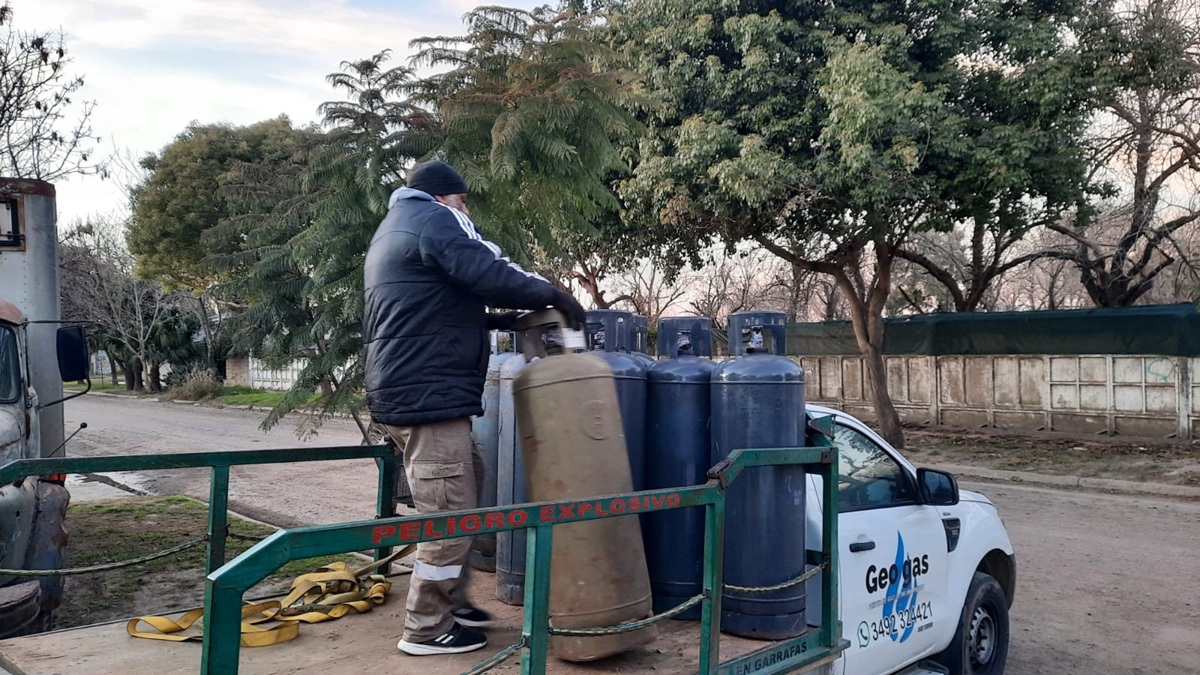
The government of Javier Milei eliminated this Thursday the reference prices of the carafes in the middle of a leap in the demand of the product for the natural gas supply crisis. According to the Argentine Chamber of Companies of Liquefied Gas (CEGLA) “up to 30% more carafes is being demanded in the interannual comparison.” The measure unprotected to lower income households that are not connected to the gas network and those that the supply was cut for the lack of pressure on the network, since they must pay higher prices or directly not being able to access their purchase.
Until the entry of the new scheme, the Ministry of Energy set reference prices to favor a regular and continuous supply. They sought to avoid clandestine trade and improve distribution throughout the country. According to National Census 2022, 46.3% of the Argentine population uses Garafas or Cylinders of LPG as the main source of energy for cooking and heating.
For the energy crisis, the gas supply for industry and CNG service stations in almost the entire country will be restricted until Friday, except some areas of AMBA and the south of Buenos Aires. There are or there were problems of lack of supply and the pressure regulators interrupted the supply in San Martín de los Andes (Neuquén), Trevelin (Chubut) and Mar del Plata (Buenos Aires) that was the most affected with whole neighborhoods that were disconnected from the network.
The recent polar wave that plagues Argentina has revealed, once again, the deep shortcomings of the country’s energy system. The record levels of gas consumption, exceeding 100 million cubic meters per day, exposed the inability of a system designed to prioritize business profits above the needs of the people.
In 2024, stage 1 of the expansion of the Néstor Kirchner gas pipeline (renamed Expert MORENO) was completed, but the project contemplated the construction of stage 2, from Selliqueló, in the west of the province of Buenos Aires, to the town of San Jerónimo, in the south of Santa Fe, with a total extension of 524 kilometers, and a gas transport capacity of up to 39 mmm/day. So far there is no plan to advance with the second stage, a work that would be key to guaranteeing the supply in situations such as the current one.
Fracking, climate change and polar wave
While Europe suffers record temperatures that exceed 40 ° C, Argentina experiences lower temperatures than usual for this time of year. This Wednesday, July 2, the National Meteorological Service reported that the minimum temperature of the City of Buenos Aires was -1.9 ° C, the lowest value registered since August 1991. “In the winter of the southern hemisphere, the month of June ended with a wave of unusual and unprecedented cold in South America, especially in Argentina, Chile and Paraguay,” the World Meteorological Organization (WMO) reported.
While climate change generates more extreme heat waves, although to a lesser extent, it is also associated with extreme cold waves such as the one we live in Argentina. Climate change not only increases temperature during the summer, it is a process that increases the intensity of weather phenomena, those related to both cold and heat as well as those related to rains and droughts.
The climatic crisis can be reversed, but on condition of attacking its roots: the way in which the capitalists produce energy, food, transport and each of the spheres of life, with the only criterion of immediate gain, in an unable system for their own logic of rationally planning socio -environmental metabolism. They increase the fracking in Vaca Muerta to extract more gas, but at the same time they worsen the situation of the planet causing the demand for common common goods.
Nationalize the energy system to make a change in the productive matrix
The privatization and deregulation model of the Argentine energy system has allowed companies to accumulate millionaire profits at the cost of very high rates for state users and subsidies. In spite of this, the entrepreneurs in the sector have not made the necessary investments to guarantee an infrastructure according to the needs of the population.
Given this reality, a paradigm shift is urgent. The integral nationalization of the energy system, under the management of its workers and the control of communities is an exit that seeks to guarantee an accessible and quality service for the entire population. This model would allow rational planning the transition to clean energies, prioritizing the people’s needs over those of large entrepreneurs.
Source: www.laizquierdadiario.com

